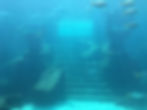IntelliReefs’ Oceanite Mixture Draws from Ancient Roman Technology
- Emily Higgins
- Dec 11, 2020
- 2 min read
Updated: Aug 23, 2021

All cement is not created equal. While our modern infrastructure crumbles, Roman sea walls are even stronger today than when first built. The reason lies in the internal structure of this compound.
According to a recent study published in the journal American Mineralogist by Jackson et al. (2017), the Romans used a mixture of volcanic ash, lime, seawater, and volcanic rock to make concrete piers, breakwaters, and harbours. According to the article's abstract, Pliny the Elder, in the first century CE, emphasized rock-like cementitious processes involving volcanic ash (pulvis) “that as soon as it comes into contact with the waves of the sea and is submerged becomes a single stone mass (erem unum lapidem), impregnable to the waves and every day stronger.”

It is uncertain when Roman concrete (opus caementicium) was first developed, but it was clearly in widespread and customary use from about 150 BC and some scholars believe it was developed a century before that. Researchers believe that the seawater reacts with the volcanic material to make new minerals that reinforce the concrete as it ages. This Roman
cement, which has lasted 2,000 years, and IntelliReefs nanotechnology mineral matrices have a lot in common. Aluminium-substituted tobermorite is understood to be a key ingredient in the longevity of ancient undersea Roman concrete. The volcanic ash that Romans used for construction of sea walls contained phillipsite, and an interaction with seawater actually caused the crystalline structures in the mortar to expand and strengthen, making the material substantially more durable than modern concrete when exposed to seawater.

IntelliReefs are created from advanced versions of Roman cements. The result is strength, ability to support biodiversity in marine growth capabilities, and sustainability. For example, Reef Life's marine concretes with nanomaterials is crack resistant, hydrophobicity, and can be used in smaller amounts than Portland cement while still exhibiting higher strengths. They also result in lower CO2 emissions during production.


Rising sea levels today and in our near future will lead many coastal cities to invest in seawalls and other structures to ward off the advance of the tides. It makes little sense to build them out of concrete if they won’t last long enough to fulfill their purpose and if making cement contributes significantly to the process that causes rising sea levels in the first place—this is what prompted IntelliReefs scientists to create Oceanite for use in everything from sea walls to the restoration of coral reefs.
The process of making portland cement today, has a heavy environmental penalty, being responsible for around 5% of global emissions of CO2. So could the greater understanding of the ancient Roman mixture lead to greener building materials?

“Another drawback for competitors of IntelliReefs is the lack of the precise mixture that the Romans followed, which we have improved upon. It will take years of experimenting, from very advanced materials scientists to discover the full formula the Romans used, then upgrade it with our materials, and mixing processing.”
~ Melody Brenna, CEO IntelliReefs
Photo credits:
Givaga / Envato Elements
Viledevil / Envato Elements
Twenty20Phots / Envato Elements
Konstantin Sobolev / IntelliReefs
Ian Kellet / IntelliReefs
Ian Kellet / IntelliReefs
